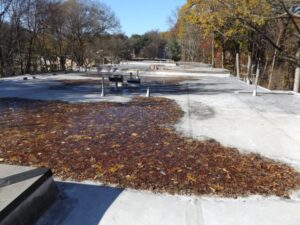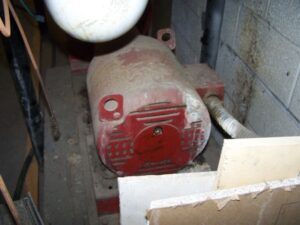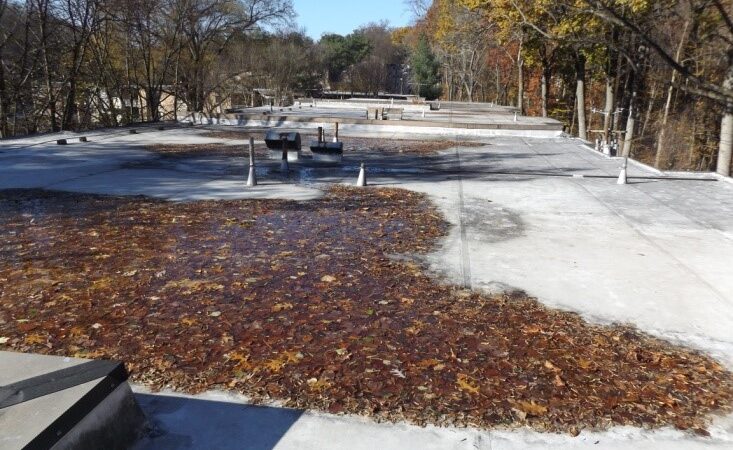A preventive maintenance program is one of the most effective ways that associations can extend the service life of many of their assets. In spite of the benefit, few associations are willing to invest the time and funding up front that is needed to implement these programs. Instead, they choose to follow a program of reactive maintenance, where action is taken only when an asset has failed.
What has led to the popularity of reactive maintenance programs is the belief that overall costs are minimized when funds are spent only when they are absolutely necessary. Why fix something that isn’t broken? It is eventually going to break down anyway and need replacement. So, they say, it is best to just wait.
Reactive maintenance programs, on the surface, appear to have several advantages. They have no upfront costs. Funding is needed only when something actually breaks and needs repair or replacement. Maintenance personnel do not have to spend time performing daily, weekly, monthly, or annual tasks that pull them away from other duties or may require shutting down the system.
What reactive maintenance programs do not take into consideration is that performing regular maintenance on many assets extends their service life, often by as much as 30%. Reactive maintenance practices also allow the asset to pick the time when emergency repairs or total replacement is needed. This, in turn, can result in extended downtime of critical building systems, disruptions to operations, expensive emergency repair calls, and even collateral damage. Budgeting for these repairs is difficult at best.
In spite of these limitations, there are times when reactive maintenance does make sense. Consider equipment that can be repaired or replaced easily and at a low cost. Small portable or window air conditioners, fractional-horsepower fan or pump motors, and other low-cost items that are not critical to the operation of the facility are good candidates for reactive maintenance. In many cases, spares can be stocked to help with rapid replacement.
Reactive maintenance is also right for temporary or emergency repairs. For example, when a roof starts leaking, it is important that repairs, even temporary repairs, be made as quickly as possible to minimize damage to the facility, its contents, and the roof itself. If the overall roof is still in good condition, those repairs may be enough to keep the roof in place for several years. But if the roof is approaching the end of its service life, those repairs can be enough to give the association time to plan for a total roof replacement.

Where reactive maintenance fails is with the larger, more expensive, and more critical assets. Consider, for example, a centrifugal pump that is used in a building’s heating or chilled water system. Centrifugal pumps, with ongoing preventive maintenance, have a typical service life of 20 to 30 years. Those preventive maintenance tasks include tasks such as periodic inspection of seals, lubrication, alignment checks, vibration monitoring, and electrical wiring inspection. Skipping performing those tasks, as is common in reactive maintenance programs, will reduce the service life of that pump to as little as five years.
Heating system boilers are another asset that requires routine preventive maintenance tasks, such as adjusting the air/fuel mixture and cleaning the combustion surfaces. While the boiler will continue to work without performing these tasks, each year that they are skipped under a reactive maintenance program will reduce the boiler’s operating efficiency by two to three percent.
Preventive maintenance programs take a different approach. Instead of waiting for something to break down and then reacting to it, preventive maintenance programs are proactive. They lay out a maintenance program that includes regularly scheduled inspections and maintenance tasks as recommended by the system manufacturer or by industry standards.
This approach offers communities several advantages over reactive maintenance. Component life is extended. Most mechanical components in a community need periodic lubrication, adjustment, cleaning, or other routine maintenance. If these activities are performed regularly, wear and tear on the component is minimized, extending its service life.
The same thing holds true for electrical components. Heat and moisture are natural enemies of electrical equipment. They work together to increase resistance to electrical connections. As the resistance increases, even more heat is generated. Add moisture, and the resulting corrosion adds more resistance. And it isn’t just the connections that can lead to system outages. Dirt accumulation on transformers and other electrical components can interfere with their cooling and lead to overheating and failure. Periodic cleaning and tightening of electrical contacts can help to prevent these failures.

Preventive maintenance is also effective in extending the life of other components, such as building surfaces. When exterior paint fails, the underlying wood becomes susceptible to deterioration and rot. If gutters are not inspected for proper drainage, water can overflow and damage fascia boards or gain access to interior portions of exterior walls, causing hidden rot. Inspecting building exterior components regularly and taking corrective action will help keep minor maintenance issues from developing into major reconstruction issues.
Extending component life is not the only advantage of preventive maintenance programs. When equipment fails or when extensive repairs are needed to systems or other building components, there is disruption. Portions of the facilities may not be usable until repairs are completed. Labor costs increase, particularly if repairs must be made during off-hours. And repairs may be delayed until the necessary parts are found and ordered.
Preventive maintenance will also help keep systems working at their highest efficiency. Even minor adjustments to energy-using equipment can improve its operating efficiency. Removing dust and dirt from heat transfer surfaces in boilers, water heaters, and heating and air conditioning coils will cut energy losses.
Helping to keep a safe environment for residents and employees is an added benefit of preventive maintenance programs. Regular inspections and maintenance will find developing issues before they develop into serious safety issues. For example, infrared scanning of components can show electrical contacts that are loose, corroded, or overheating before they lead to an outage or worse.
Preventive maintenance programs do have several perceived disadvantages that have served as roadblocks to their implementation in many communities. Preventive maintenance programs are time-consuming. Equipment and systems must be named for inclusion. Inspections and routine maintenance activities do take time to perform, placing added time requirements on maintenance personnel. But as the program matures, communities will find that their investment in up-front activities will be offset by reduced time spent dealing with breakdowns.
Another disadvantage is that successful preventive maintenance programs will require an up-front investment in stocking replacement parts, buying test equipment, or contracting for inspection or testing services. For a program just starting, these can be significant. However, it isn’t necessary to go from 100% reactive maintenance to full preventive maintenance overnight. It is far better to ease into the program gradually based on the resources available. This limited approach will also give community board members time to sell the program to the community based on its success to date.
Next month, we will delve into implementing a preventive maintenance program that delivers results without overstretching your community’s budget. Be sure to watch for upcoming blogs.

